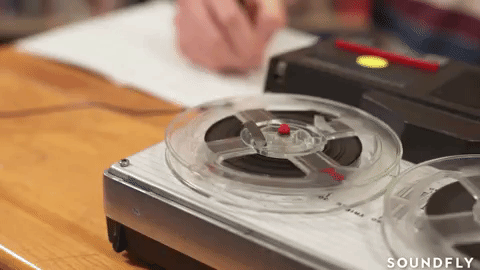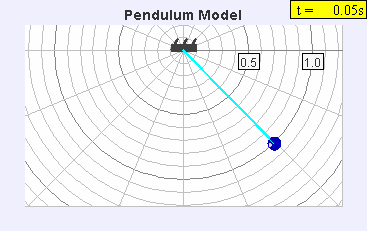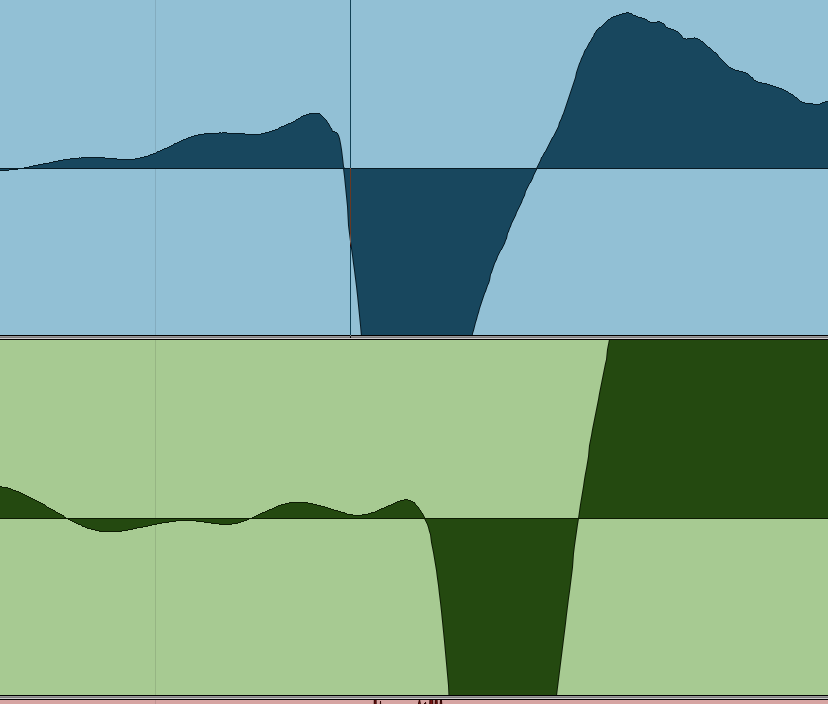14 Commonly Confused Terms In Music, Audio
As with any field so diverse and complex, the music industry is rife with terminology and vocabulary that can baffle those outside the recording industry and which are often confused or misused by those within it. Here we clear up some of the most commonly confused terms in music and audio.
_______________________
Guest post by Brad Allen Williams of Soundfly's Flypaper
Once upon a time, remixing a song meant actually redoing the mix. Many vintage consoles (some Neve 80-series, for example) have a button labeled “remix” that changes a few functions on the desk to optimize it for mixing rather than recording.
But sometime in the late 20th century, the word “remix” began to take on a new meaning: creating a new arrangement of an existing song using parts of the original recording. Into the 21st century, it’s evolved again and is now sometimes used as a synonym for “cover.” The latter two definitions remain in common use, while the first has largely disappeared.
Language is constantly evolving, and musical terms are obviously no exception. In fact, in music, language seems to evolve particularly fast, most likely owing to lots of interdisciplinary collaboration and the rapid growth of DIY.
Ambiguous or unorthodox use of language has the potential to seriously impede communication between collaborators. In order to avoid an unclear situation, let’s break down standard usage of some of the most commonly conflated, misused, or misunderstood music-related terms.

Gain, as it’s used in music electronics, is defined by Merriam-Webster as, “An increase in amount, magnitude, or degree — a gain in efficiency,” or, “The increase (of voltage or signal intensity) caused by an amplifier; especially: the ratio of output over input.”
To put it in less formal terms, gain is just an increase in strength. If an amplifier makes a signal stronger, then it causes that signal to gain intensity. Gain is usually expressed as a ratio. If an amplifier makes a signal 10 times as loud, then that amplifier has a “gain of 10.”
On the other hand, harmonic distortion is that crunchy or fuzzy sound that occurs when an amplifier clips (as a result of its inability to handle the amount of signal thrown at it).
In the 1970s, some guitar amp manufacturers began employing extra gain stages in their designs to generate harmonic distortion on purpose. In other words, they’d amplify the signal, then amplify it again, and that second gain stage — having been given more than it could handle — would distort. These became known as “high-gain amplifiers.” Because of this, many guitarists just assumed that gain was synonymous with distortion. This was cemented when later amps like the Marshall JCM900 had knobs labeled “gain” that, by design, increased the amount of harmonic distortion when turned up!
Outside the realm of electric guitar, though, gain is still most typically used in a conventional way. When a recording engineer talks about “structuring gain,” for example, he or she is usually specifically trying to avoid harmonic distortion. It’s easy to see how this might cause confusion!
+ Read more on Flypaper: “Squeeze to Please: The Basics of Compression in Audio”

Not to pick on guitarists, but this is another one that trips us up. Tone has many music-related definitions, but the one of interest at the moment is (again, per Merriam-Webster), “Vocal or musical sound of a specific quality…musical sound with respect to timbre and manner of expression.”
On the other hand, the dictionary definition of tonality is:
1. Tonal quality.
2a. Key.
2b. The organization of all the tones and harmonies of a piece of music in relation to a tonic.
It’s important to note that “tonal quality” here refers to “the quality of being tonal,” or the quality of being in a particular key (in other words, not atonal). This is a different matter from “tone quality,” which is commonly understood to mean “timbre.” Most musicians with formal training understand tonality either as a synonym for key or as the quality of being in a key.
If you’re trying to sound fancy, it can be tempting to reach for words with more syllables, but using tonality as a synonym for timbre can be confusing. Imagine you’re recording two piano pieces — one utilizing 20th-century serial composition techniques and the other utilizing functional harmony. If you express concerns about the piano’s “tonality” while recording the second piece, the composer would probably think you were criticizing his or her work!

Most musicians in the modern era understand the difference between these two concepts, but they still occasionally confuse folks relatively new to the process of recording.
Overdubbing is adding an additional layer to an existing recording.
“Punching in” is replacing a portion of an already-recorded track with a new performance.
To do a “punch-in” (in order to fix a mistake, for example), the performer plays along with the old performance until, at the appropriate moment, the recordist presses record, thus recording over the mistake. The recordist can then “punch out” to preserve the remainder of the original performance once the correction is made.
+ Learn more on Soundfly: Write more interesting pieces of music by better understanding the foundational elements of composition with our mentor-driven course, Introduction to the Composer’s Craft.

A portamento is a continuous, steady glide between two pitches without stopping at any point along the way.
A glissando is a glide between two pitches that stair-steps at each intermediate note along the way. A glissando amounts, in essence, to a really fast chromatic scale.
To play a glissando on guitar, you’d simply pluck a string and slide one finger up the fretboard. The frets would make distinct intermediate pitches, creating the stair-stepped effect. If you wished to play a portamento on guitar, you could either bend the string or slip a metal or glass slide over one of the fingers of your fretting hand.

While often used interchangeably in modern practice, vibrato and tremolo are actually distinct kinds of wiggle. In most cases, tremolo is amplitude modulation (varying the loudness of the signal), whereas vibrato is frequency modulation (varying the pitch of the signal).
But over the past few hundred years, tremolo has commonly referred to many different performative actions. On string instruments, tremolo is used to refer to the rapid repetition of a single note, and in percussion, tremolo is often used to describe a roll. Singers use it for even crazier things, like a pulsing of the diaphragm while singing¹.
Leo Fender must’ve had his terms confused — he labeled the vibrato bridges on his guitars “synchronized tremolo,” and the tremolo circuits on his amps “vibrato.” Confusion has reigned ever since.

Analog and digital are perhaps the most confused pair of words in the 21st-century musical lexicon. I once had a somewhat older musician tell me that my 1960s-era fuzz pedal and tape echo made my guitar sound “too digital” for his music. Likewise, countless younger musicians claim to prefer the “analog sound” of the original AKAI MPC (an early digital sampler) and the Yamaha DX-7 (an early digital FM synthesizer). But “analog” and “digital” are not simply stand-ins for “vintage” and “modern,” nor for “hardware” and “software.” They’re entirely different mechanisms for storing and generating sounds. Let’s learn a little more!
Merriam-Webster’s most relevant definition of analog is, “Of, relating to, or being a mechanism in which data is represented by continuously variable physical quantities.”
Also relevant is its first definition of analogue: “Something that is analogous or similar to something else.”
Now, how does this relate to music technology? It all goes back to humans’ longstanding search for a way to capture and store sound. Sound, on a basic scientific level, is nothing more than compression and rarefaction (decompression) of air that our ears can sense. Since air pressure fluctuations can’t really be stored, recording sound proved elusive for a long time.
20th-century scientists and engineers, however, brilliantly figured out that recording sound might be possible if they could accurately transfer that sound into something that could be preserved. They needed something storable that would represent the sound; an analogue to stand in for the sound that would allow it to be captured and kept.
First, they used mechanically generated squiggles on a wax cylinder as the analogue. Eventually, they figured out that they could use alternating-current electricity (which oscillates between positive and negative voltage), as an analogue of sound waves (which oscillate between positive and negative air pressure). From there, it was a relatively short leap to figuring out that they could, through electromagnetism, store that information as positively and negatively charged magnetic domains, which exist on magnetic tape.
This is analog recording!

Since electric voltage is continuously variable, any process — including synthesis — that represents air pressure fluctuations exclusively using alternating current electricity is analog, per Merriam-Webster’s first definition above.
Digital, on the other hand, is defined as, “Of, relating to, or using calculation by numerical methods or by discrete units,” and, “Of, relating to, or being data in the form of especially binary digits, digital images, a digital readout; especially : Of, relating to, or employing digital communications signals, a digital broadcast.”
That’s a little arcane, so let’s put it this way: Rather than relying directly on continuous analog voltages, a digital recorder or synthesizer computes numerical values that represent analog voltages at various slices of time, called samples. These will then be “decoded” into a smooth analog signal later in order to be accurately transferred back into actual air pressure variations at the speaker. If that’s a blur, don’t worry — you only need to understand that this is a fundamentally different process of storing or generating sound.
Absent a real acquaintance with the technology of an individual piece of equipment or process, it’s probably safer to avoid leaping to conclusions about whether it’s analog or digital. For example, there are reel-to-reel magnetic tape machines (like the Sony PCM 3348 DASH) that don’t record analog voltage-based signal at all, but rather use the tape to store digital information (as simple ones and zeroes).
Since you can’t judge whether a piece of gear is analog or digital with your eyes, it’s probably best to only use these terms when you need to refer to the specific technologies as outlined above. In other words, next time you’re recording in a studio with a cool-looking piece of old gear, it’s probably safer to use #vintage instead of #analog to caption your in-studio Instagram photo!

+ Learn more on Soundfly: Record, capture, and warp samples of pretty much any sound imaginable, and learn how to manipulate them into music in Ableton Live with our free course series, Any Sound Will Do.

Phase is defined by Merriam-Webster as… (deep breath):
“The point or stage in a period of uniform circular motion, harmonic motion, or the periodic changes of any magnitude varying according to a simple harmonic law to which the rotation, oscillation, or variation has advanced from its standard position or assumed instant of starting.”
That’s a mouthful! This is a concept that’s easier understood with an example, so let’s imagine that you have a swinging pendulum:

If you were to freeze that pendulum at two different times, the dot at the end would be in two different locations. The pendulum’s swing occurs over time, so the location of the pendulum depends on when you stop it. We’d refer to the phase of the pendulum in order to describe this phenomenon and where the pendulum is in its cycle relative to time. And since it’s always moving in a continuous, smooth arc, there are an infinite number of possibilities!
Phase becomes potentially relevant for anything that’s oscillating or undulating — like the pendulum above or a sound wave.
Polarity, on the other hand, is defined as, “The particular state, either positive or negative, with reference to the two poles or electrification.”
To put it in very simple terms, you’re dealing with polarity any time you install a battery. The battery has a positive terminal and a negative one. You have to make sure it’s installed the right way. While phase is infinitely variable, polarity has only two choices — it’s one or the other.
In our brief explanation of analog audio above, we mentioned that positive and negative swings of voltage are used to represent positive and negative changes in air pressure. If we switch polarity of a signal, we swap all the positive voltages for negative ones, and vice-versa. +1v becomes -1v, +0.5v becomes -0.5v, etc. This is usually accomplished with a button marked with the Greek letter theta or “Ø.”
Interestingly, if you have one signal alone, it’s usually the case that our ear can’t really tell the difference between positive or negative polarity. It’s when you combine two or more similar signals (like two microphones on one drum for instance) that a polarity flip of one or the other can have a dramatic influence on the sound.
Confusingly, this influence is a result of phase differences between the two sources, and switching polarity can often improve (or worsen!) the sound of two combined sources which are slightly out of phase. For this reason, the polarity switch is often called a “phase switch,” and depressing it is often colloquially referred to as “flipping phase.”
In the graphic below, you’ll see a brief, zoomed-in snapshot of two waveforms. A single bass performance was simultaneously recorded into both a direct box (blue) and through a mic on its amplifier (green).
In the first graphic, you can notice that the two are slightly out of phase. The blue direct-in wave swings negative ever so slightly before the green mic–on–amp one does. This is because the amp’s sound had to travel through the air briefly before being picked up by the microphone. Since sound in air travels much more slowly than electricity does, this creates a slight time delay or phase discrepancy.

+ Read more on Flypaper: “The Ins and Outs of Recording Your Guitar ‘Direct In'”
In the second example below, I’ve flipped the polarity of the amp track. You can see that the time delay still exists, but now the amp track’s wave is inverted or “upside down.” As the DI track swings negative, the amp track swings positive.
In this case, the switch made the combined sound noticeably thinner, so I quickly flipped it back. Occasionally though, flipping polarity improves the combined sound of two sources which are slightly out of phase.

In practice, most recordists will understand what you mean if you say “flip the phase,” but should there happen to be a physicist in the room, you might get a raised eyebrow! Generally, though, this is a classic example of how unorthodox usage sometimes becomes accepted over time.
Which raises the point: any of the musical and audio terms above may eventually, like “remix” before them, evolve to incorporate new shades of meaning (or even have some earlier “correct” definitions fall into disuse). In the meantime, though, the more precise your grasp on the language of music, the less likely you are to misunderstand or be misunderstood.
New to recording and audio terminology? Our free course Demo Recording 101 is for you! This course walks you through the whole process of home recording your first project on a modest budget and with limited resources and still get the best-sounding song possible.
—
¹ In performance, for both singers and many instrumentalists, pure tremolo is almost impossible to achieve without taking on some characteristics of vibrato — that is to say that a passage is played or sung with only variations of either pitch or volume.